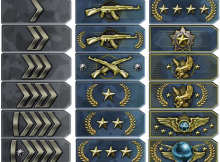Combining rules that govern the receiving of a digital #badge with psychological factors, #game designers are able to make better badges.
Rudy McDaniel ja Joseph Fanfarelli from University of Central Florida have developed new design recommendations for digital badges used in games. For the basis of their recommendations they chose Juho Hamari’s and Veikko Ervasti’s concept called completion logic. Completion logics are the rules that govern the receiving of a badge.
Hamari and Ervasti divided completion logic into four different parts: Trigering action or event happens when a player makes a certain action or is at a certain point in a game and a badge is awarded. Pre-requirements for the game setting include conditions that have to be met so that a badge can be awarded. Conditional requirements for the game state contain matters such as place, time frame or how an action is made. These requirements govern if a badge is given. Multiplier controls how many times a certain action has to be completed before a badge is given.
According to McDaniel and Fanfarelli these four parts need to be concidered in relation to three pyschological dimensions: the cognitive, the affective and the social. The Cognitive dimension relates to learning, goal orientation and self-regulation, the affective dimension entails feelings such as motivation, curiosity & arousal and the social dimension contains reputation and credentialing. These areas are all part of psychological functions for badges as defined by researchers Antin and Churchill.
By using the combined model of completion logic and psychological factors on four different example cases, researchers were able to suggest design recommendations for badges. The examples used in their study were games called Medula, Counter-Strike: Global Offensive and Goat Simulator as well as a process called debriefing. Debriefing is used as a way to get specific information from the players regarding certain expriences in games. The design recommendations included:
- Desiners should consider memory or other cognitive phenomena as well as relationships between thinking and behaviour.
- A small pilot test is recommended to test out the interaction of rules and social game play.
- A list of destructive aspects that could arise from collaborative badges should be created, along with solutions to tackle these aspects.
- Humor, curiosity and other affective factors can be used to encourage exploration.
- Relationships between emotions and elements of badges should be taken into account.
- Completion logics and their requirements for player should be identified for each badge.
- Actions that represent success or failure should be timestamped to identify logics not yet satisfied by that point.
Understanding the psychology of the player as well as the different components of badges allow designers build better digital badges, McDaniel and Fanfarelli conclude.
Source: McDaniel, R., Fanfarelli, J. 2016 Building Better Digital Badges: Pairing Completion
Logic With Psychological Factors. Simulation & Gaming 47 (1), 73-102.
http://sag.sagepub.com/content/early/2016/02/04/1046878115627138.abstract

Leave a Reply